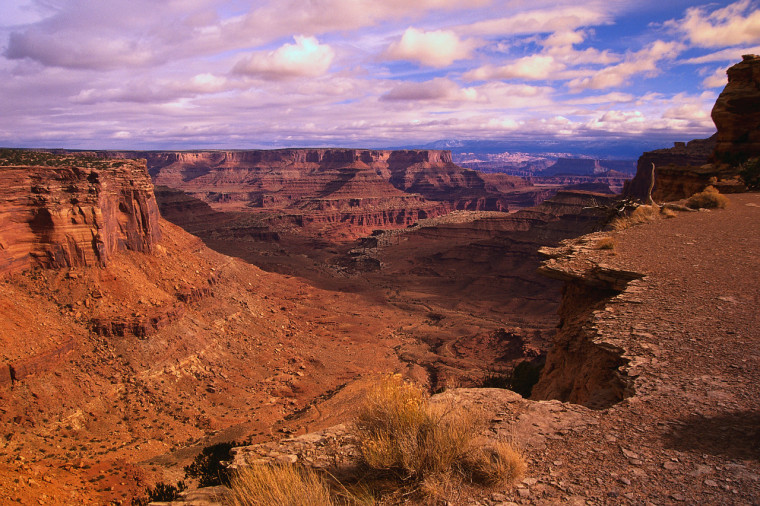The national parks of southern Utah maintain a friendly rivalry. Each has its bragging points: Bryce Canyon is loaded with photogenic spires known as hoodoos; Zion offers imposing cliffs and lush hanging gardens; Capitol Reef has brilliant, colorful canyons and odd rock formations; Canyonlands wins in terms of overall size; and it's pretty obvious what Arches is known for.
Much of Bryce Canyon is more than 8,000 feet high, and in early spring you'll probably have to deal with snow and mud. Tourists flock to southern Utah in summer, so May is a good bet for smaller crowds, drier terrain, and more predictable weather.
One of the prettiest and most popular trails at Bryce combines parts of the Navajo Loop and Queens Garden trails (2.9 miles total) for great photo ops of delicately eroded hoodoos. You're more likely to spot mule deer, elk, and dozens of bird species in the forest on the 8.5-mile Riggs Spring Loop. At one point the trail opens to spectacular views of the Pink Cliffs on the southern edge of the park. Hiking doesn't have to stop when darkness falls; the sky is clear enough for full-moon walks, sans flashlight.
The terrain over at Zion is varied, with soaring cliffs, narrow canyons, and emerald pools. While it's warm in May (often in the high 80s), you won't encounter the three-digit temps of midsummer. To cool off, scamper up to Weeping Rock—the quarter-mile trail is shady, but steep in spots.
In a grotto area, water continuously "weeps" down tall sandstone walls that are overgrown with hanging gardens. Real adventurers can take on the Zion Narrows, hiking in and along the Virgin River in a 1,000-foot crevasse. The water should be gushing and extra chilly in May; ask a ranger about flash flood dangers and water conditions beforehand.
Proof you were there
More than 400 parks, monuments, and historic sites fall under the domain of the National Park Service. The pocket-size "Passport to Your National Parks"($8) serves as a checklist for all those great sights, from Appomattox Court House to Zion National Park.
The 104-page book, available at most park gift shops and at eparks.com, comes with thumbnail descriptions of what to see divided by region, plus a U.S. map highlighting federally protected spots. Blank pages are set aside after each region for collecting national-park stamps (a new set is issued every year) and ink seals of sites you visit. Get your passport stamped at the visitors center before leaving.
